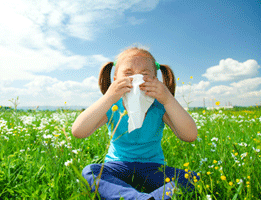How's the Indoor Air Quality in Your Tulsa Home? 3 Ways You Can Improve It
AIR DUCT CLEANING - Broken Arrow
At Air Assurance, we provide many indoor air quality solutions. Many homeowners have dealt with allergies, dust, or other problems in their home never realizing that the indoor air quality can be improved. If too little outdoor air enters a home, pollutants such as dust, mold, bacteria, fungi, and other contaminates can accumulate to levels that can pose health and comfort problems. Health concerns, such as allergies, asthma or the hazards of carbon monoxide can often be attributed to a poorly maintained, designed, or installed heating and air conditioning system. We provide duct cleaning service in Broken Arrow, Jenks, Owasso, Coweta, Tulsa and more!
AIR DUCT CLEANING REQUIRED?
Indoor Air Quality is important. Air duct cleaning helps maintain the hygiene of your household. Unclean ducts make the air unfit for breathing. Bad indoor air quality is one of the major causes of many respiratory problems like asthma and allergies. But did you know, you don't always need a duct cleaning? Often times we can help elimnate the source of the duct problem.
The system cleans your air ducts by brushing and removing debris and dirt directly out of your HVAC system and into our hepa filtration silencing box. We can then apply an anti-microbial protectant inside your duct work that kills most germs and microbes on contact for up to an entire year, greatly reducing or eliminating air-borne pathogens.
An HVAC air filter captures only about 7 percent of airborne debris in the average home. That means that roughly 93 percent of the dust in your air keeps circulating through the heat vents and HVAC system. To improve your air quality and protect your costly HVAC equipment from damage, it's wise to have the condition of your ducts checked every two years. When duct cleaning is needed, make sure you hire an experienced professional who adheres to standards established by the National Air Duct Cleaners Association (NADCA) and uses the correct cleaning procedures to safeguard your home and HVAC system.In between checkups, watch for these telltale signs that your ducts need cleaning.
About indoor air quality
Everyone deserves to breathe healthful air, especially at home. Doing so can be a challenge in today’s modern world, however, when homes are well insulated for energy efficiency. Airtight homes have a downside: They trap contaminated air inside. Many products that we use daily at home contribute to bad indoor air quality, too. Cleaning fluids, pesticides, hobby materials, home improvement dust and even wet carpets emit harmful particles, polluting your air supply. Combustion debris and gases from cooking/home heating float through our indoor air along with pet dander, dust and bacteria. Here in the Tulsa area, we have the added challenge of a humid climate, which encourages mold growth.
Safeguarding indoor air quality: the three ways
Source control: Your goal is to eliminate or minimize sources of poor indoor air quality. Limit the use of harmful chemicals in your home and ensure proper storage. When cooking or showering, use your exhaust fans (properly vented to the outdoors) to clear out cooking odors and humid, moist air. Schedule preventive maintenance to ensure your appliances and HVAC system work properly, limiting the possibility of gas leaks. For safety, install CO (carbon monoxide) monitors/detectors near sleeping areas and test regularly.
Ventilation: Proper, balanced airflow throughout the home depends on a properly designed, sized and maintained duct system. Have your ductwork sealed to prevent energy loss and maintain air quality. Duct cleaning is advisable in some cases. Since A/C systems can’t provide adequate ventilation, whole-house mechanical ventilation is recommended.
Air cleaning: No one air sanitizing method is perfect, but using a few specialized tools in combination can provide greatly improved IAQ. Whole-house air cleaning with UV lighting, when incorporated into your home’s air cleaning, heating and cooling system, helps prevent the growth of harmful bacteria. Consider asking your home comfort contractor to apply broad-spectrum antimicrobial microbiocide to further inhibit harmful bacteria. For the best air quality, include a whole-home air cleaner with an advanced filtration system and highly effective air filter.
Concerned about indoor air quality? Contact the experts at Air Assurance. Visit our website to learn more or give us a call.
Our goal is to help educate our customers in the Tulsa and Broken Arrow, Oklahoma area about energy and home comfort issues (specific to HVAC systems).




